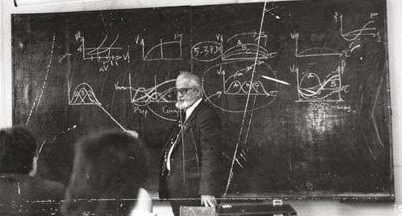
Sports Science is an umbrella term that has been applied to studies of psychology, physiology, biomechanics, motor learning, and kinesiology (just to name a few) and how they apply to sport. Australia and the UK are often looked upon as leaders in this field, despite the multi-billion dollar sports industry here in the United States. Domestically, most Strength and Conditioning or Sports Performance Coaches earn degrees in these types of fields with an emphasis on the health and wellness aspects of exercise science, less so the performance aspects of true sports science. Perhaps because of this, countless US organizations have looked internationally to the Europe and Australia to hire more formally educated sports scientists. With the outrageous amounts of money and interest in sports in the United States, why have we lagged so far behind in the field of Sports Science?
The study of sports science encompasses many disciplines mentioned previously, but is specific to athletes who are performing in a competitive environment. This field is obsessed with creating a better performing, longer lasting, more consistent athletic performance at both the “amateur” and elite levels. True sports science will often be undertaken by a team of people with expertise in different areas to both collect, analyze, and interpret the data, as well as apply or at the least suggest interventions based on the findings. All four major sports in the United States have either directly or indirectly shown their belief in Sports Science, often by hiring our international colleagues in these roles or purchasing different sports technologies.
The Sports Scientist role may be relatively new, but the field of sports science has existed for decades. Some may consider the birth of this field as being funded by the former Soviet Union with the intent of validating the superiority of Communism to the World. These scientists created the foundation from which sports science and sports performance was born. With the need to prove world dominance through athletics on the back burner for most countries, funding from most governments has decreased dramatically (if it ever existed at all). One only needs to read Charlie Francis’s writings to see some of the challenges he faced from a funding perspective while working with elite athletes in Canada in the 1980s. This phenomenon parallels the decrease in government funding to NASA which has in turn seen the birth of the private sector space race and companies such as SpaceX and Virgin Galactic. Now if we look to these frontrunners in the current world of sports science we see a much different picture. The Australian Institute of Sport (AIS) is one such organization that has been able to secure funding and in turn produce some great content and sports scientists much more recently.

Other funding for research often comes from private companies such as the Gatorade Sports Science Institute, or individual collegiate and professional sports teams doing research in house. Both professional sports organizations and private companies are for profit organizations. Any sport team or organization doing research is going to keep their findings to themselves as they are hoping for it to become a competitive advantage. Even institutions of higher education can struggle to collaborate between athletic and academic departments because of pressures publish and earn grant money. Funding is much easier to obtain for studies that can apply to the health of the masses than the performance of the few. Funding coming from private companies will always been looked upon with skepticism. A lot of this bad research and in turn skepticism stems from the nutritional supplement industry that has a history of deceit and unethical conduct.
These challenges obviously hit close to home for us here at Sparta, as our goal is to be both transparent with our research but also protective of our product. Any research we publish or fund will always be viewed with some skepticism. It is a challenge to find completely independent third party sports scientists to publish research validating what we do. While this doesn’t mean any and all research that private companies present is biased and should be ignored, it definitely makes deciphering the good from the bad a challenge.
As an up and coming strength coach the writings of Verkhoshansky and Matveyev are a big piece of your education. Though many of these older works are referred to today, the application of some of these principles has recently started to be questioned. Which findings of training the Olympic athlete, on the quadrennial cycle, often with the use of drugs apply to the year-round team sport athletes of today? Because of how much sports have changed, there is an urgent need to at least challenge these principles that have for so long been unquestioned. This is in no way to discredit these pioneers, but as a field we need to move forward from referencing research studies over 30 years old as a basis of our current philosophies. What if the field of medicine did the same?

Most current research that claims to be sports science is really research in the field of exercise science. Exercise science and sports science are as different as pediatrics and geriatrics. Both fields will have an understanding of how the human body works, but the populations, applications, and goals can differ vastly. Finding quality research that is applicable to sport is a challenge. Experimental research design is superior to observational studies but highly impractical in the world of athletics. No coach, or GM is going to allow a random assignment of training protocols and control groups with millions of dollars at stake. Academic programs are aimed at educating students on health and wellness as the number of jobs in these fields are infinitely larger than the number of jobs working in sports.
The amount of research done using competitive athletes as subjects is surprisingly low for a variety of reasons: inability to get funding and use experimental design, challenges with IRB approval, as well as a lack of compliance from sport coaches and athletes. Most sport coaches in the US do not have any physiology background, and because athletes aren’t used to data be collected they often fear it will be used against them instead of to help them. In most cases when athletes are used, the sample size is so small the results of the study are “statistically interesting” at best. Another challenge is the lack of applicable and practical uses of these findings. Isokinetic and VO2 Max testing and training is commonplace in the literature, but highly impractical. With time being the most valuable resource an athlete has, time consuming testing and interventions cannot be realistically be applied. While this disconnect between academic and applied science is not unique to sports, it still poses a challenge in the growth of true sports science.

One of the biggest advantages of advances in technology is the ability to communicate and share with people around the world. For us, that leads to not only partnering with sports organizations on multiple continents, but also the ability to grow our database exponentially. As our database continues to grow we are able to not only improve our predictive models, but continue to search for insights and trends we have yet to hypothesize. For a professional or collegiate team hoping to do research, realistically it would take years to collect enough data to be of any value. This doesn’t work in this day and age of sports; teams and coaches need to win and WIN NOW. Because of how small the world of sports is, collaboration is going to be crucial. The ability to aggregate data allows us to test hypotheses drawn from case studies of one on populations of thousands, to ultimately improve our understanding and better help our athletes.
The field of Sports Science is here to stay, and many of these challenges are as well. Because of that, especially in this country, we need to embrace the growth and evolution of the field, and vow to have a positive influence. Sport coaches, strength and conditioning coaches, physiotherapists, athletic trainers, doctors, researchers, biomechanists, and psychologists all can play a part. These days it takes a village to care for an athlete, or at least a village is involved whether they all need to be or not. These different disciplines need to understand current research and science. We need to assess the validity, practicality, and applications of these findings, and suggest ways to improve the research process. We need to trust our instincts, past experiences, and knowledge. Increase collaboration and transparency across departments, sports, disciplines, and cultures. Be skeptical yet open-minded. We need to be emotionally intelligent, convicted, and honest. Sports performance and sport medicine practitioners must do what is best for the athlete, while keeping an open mind and continuously search for a better way.